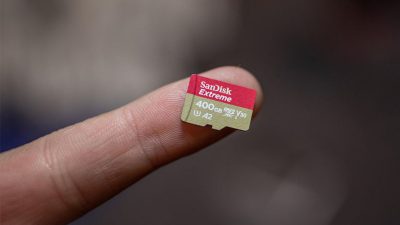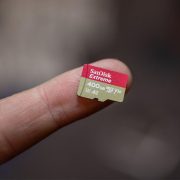You’ve inserted your new memory card into your device and found that there is a loss in capacity – what should you do now? Is this normal?
At some point, most users of memory cards have come across a situation where the capacity of a card isn’t as large as initially advertised. You may be wondering if you have purchased a faulty product and should you return the memory card? To put it simply, no. Loss of capacity on a memory card is actually completely normal.
Within this article, we highlight why encountering a loss of capacity on your memory card is normal and explain why this is happening.
Why do memory cards lose capacity?
Have you ever put your new memory card into your computer only to discover that it is a fraction short of the full capacity? You may have perhaps noticed that your 32GB SD card has turned into 29.8GB once installed? Don’t worry. Your memory card isn’t faulty. It has actually got more to do with the way that the card manufactures choose to advertise their products than with the card itself.
Advertised size is rounded to an even number:
Firstly, the size displayed on the card is rounded up (or down) to an even number, even though it technically can’t truly calculate out to this. Why do manufacturers do this? Well, memory card manufacturers decide to use the SI system to allocate the specific capacity of a memory card. Whereas computers and card readers utilise the binary system to calculate the size, consequently, this is where the lost bytes are hiding.
When purchasing from any manufacturer or company, it is important that you always read the specs. Typically, if you turn to the reverse of your memory card packaging it will display information advising you of the exact amount of MB or GB that you are purchasing. Essentially, it’s just been calculated differently and rounded up or down to the nearest ten, rather than two – you haven’t been cheated or offered less space.
Formatting files take up space:
The raw number of bytes of storage that need to be shared between your operating system and actual files can cause a loss in memory capacity.
Essentially, there must be a way for the operating system to understand what information stored on the memory card is related to which file, in order for the storage device to be operative. In other words, your computer/operating system must format your memory card. This, in turn, uses up space and means that the storage space of the card is then less than its unformatted capacity.
This issue is often encountered with storage media like memory cards. The amount of space that is reduced will differ depending upon the size of files and what operating system you are using. As it does differ, it is near enough impossible for card manufacturers to state the size of the card after it has been formatted.
The difference should be small:
Although a loss of capacity is completely normal, the difference should be small. It’s important you don’t mistake a small loss in capacity with an actual faulty card. If you slot your card into your computer and notice a significantly great loss in capacity, then you have perhaps received a defective product. To ensure you don’t encounter a faulty card, make sure you purchase reliable memory cards from reputable brands and sellers.
Nonetheless, it is important to take into consideration that the higher the GB, the more you are actually noted to lose. For example, if you buy a 256GB SD card, you may lose a total of 9GB, compared to a 32GB SD card where you may only lose a mere 0.2GB.
There’s not much you can do to fix it:
No matter whether you use a different operating system or buy a memory card from another brand, unfortunately, there’s not much that can be done about this loss in capacity. There are a number of tools available which show you how to format an SD card with SD card formatting tool to reclaim lost/unallocated space, but it’s important to note that the difference will be small if any, as reformatting will only produce the same results.
This isn’t just for memory cards either, a loss in capacity on all memory storage is a common component. Unfortunately, it’s something that can’t be changed as it is all down to the manufacturers and the way memory is formatted.
We hope this article has effectively explained why this is happening and confirmed why a loss in storage capacity is quite normal. If you have any questions, please feel free to use the comment box below.























Is it normal for a 128gb memory card to come up as 119gb once inserted into a laptop? 9gb seems like quite a big chunk to lose. I bought a new one from SanDisk.
Hi Fariha,
Thanks for your comment.
Yes, this is quite normal. Unfortunately, the bigger the capacity, the more you are expected to lose when the card has been formatted. The amount of space that is reduced will differ for everyone depending on the size of your files and operating system you use.
Let us know if you have any further queries.